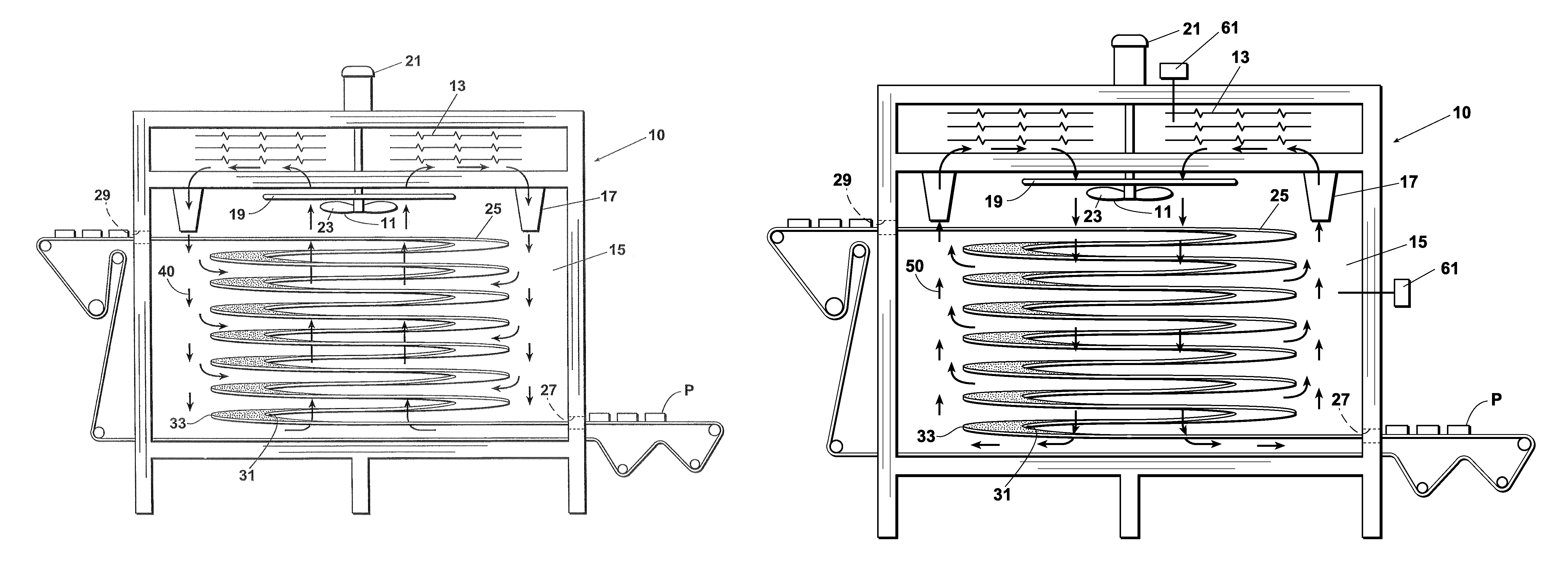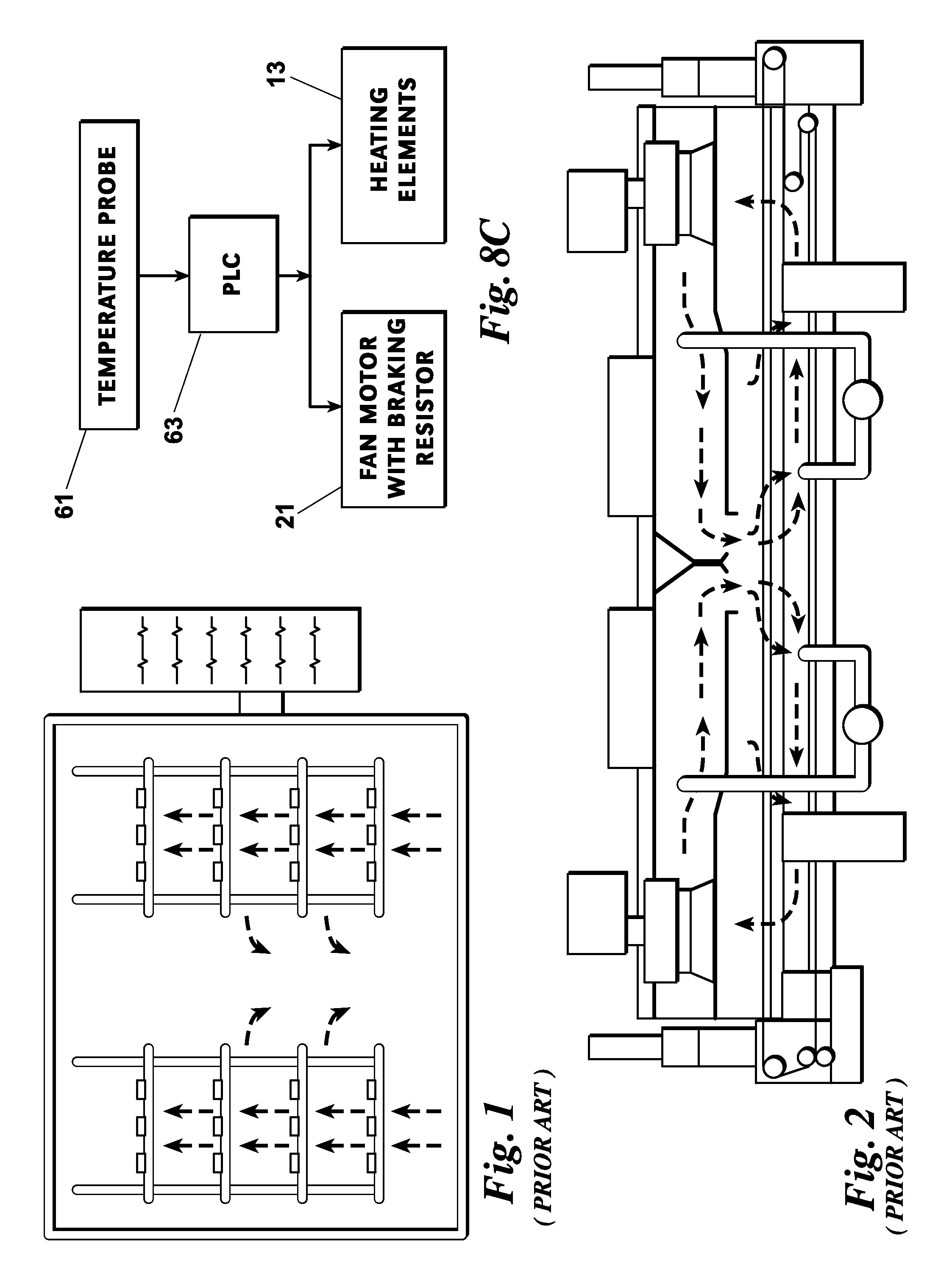Airflow pattern for spiral ovens
a spiral oven and airflow pattern technology, applied in the field of spiral ovens, can solve the problems of increasing the floor space requirements, the cost of increasing the heat transfer system needed to cook the product, and the problem of spiral ovens that are far more difficult to solve, so as to reduce or eliminate the temperature difference between products, the effect of quick change of directions and low cos
- Summary
- Abstract
- Description
- Claims
- Application Information
AI Technical Summary
Benefits of technology
Problems solved by technology
Method used
Image
Examples
Embodiment Construction
[0025]A spiral oven made according to this invention creates a controlled airflow pattern that better reflects the heat transfer demands of the product being cooked in the oven. Because the product to be cooked is loaded uniformly across the width of the cook belt, prior art spiral ovens (see e.g. FIGS. 1 to 4) are designed to provide a unidirectional airflow pattern within the cooking chamber and, therefore, a substantially uniform airflow across the belt. The width of the cook belt in most commercial spiral ovens ranges between 12 and 42 inches.
[0026]Regardless of the width of the cook belt, a loading pattern must be determined relative to the size of the tray in which the product or meal to be cooked is placed. Consider a 40-inch wide cook belt loaded with trays that are 7 inches wide, 10 inches long, and 2 inches deep (see FIG. 5). The trays are typically CPET trays used for microwaveable-ready meals. If the cook belt is loaded four trays across, with the trays arranged short si...
PUM
 Login to View More
Login to View More Abstract
Description
Claims
Application Information
 Login to View More
Login to View More - R&D
- Intellectual Property
- Life Sciences
- Materials
- Tech Scout
- Unparalleled Data Quality
- Higher Quality Content
- 60% Fewer Hallucinations
Browse by: Latest US Patents, China's latest patents, Technical Efficacy Thesaurus, Application Domain, Technology Topic, Popular Technical Reports.
© 2025 PatSnap. All rights reserved.Legal|Privacy policy|Modern Slavery Act Transparency Statement|Sitemap|About US| Contact US: help@patsnap.com



